Calibrachoa: features, planting and growing a flower

The plant with the unusual name calibrachoa often adorns garden plots, balconies of city apartments and even the interior spaces of houses. The bright and attractive appearance of this petunia-like flower has made it a favorite of most gardeners.
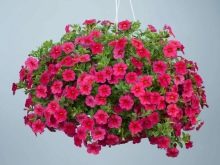
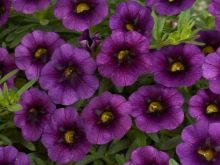
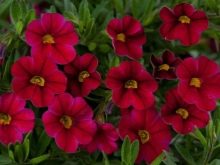
Description
Calibrachoa is a member of the nightshade family, along with its closest relative, the petunia. However, until 1990, the plant was considered one of the varieties of petunias. Ampel calibrachoa has powerful stems, stiff in its lower part, as well as long shoots. The length of the stems sometimes reaches one and a half meters. The spherical crown is abundantly covered with small buds.
The flower itself is only 3 centimeters in diameter, and its center is always colored yellow or brown. The classic color of the petals is purple, but thanks to breeders, this parameter may be different. The leaves are rather narrow, elongated and covered with the same fluff as the stems. The hairs are short, but do not differ in density. Their length ranges from 3 to 4 centimeters, and their width hardly reaches 1 centimeter.
Calibrachoa is an annual.

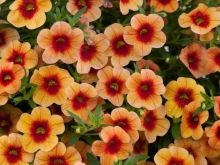

How is it different from petunia?
Calibrachoa is often marketed as ampelous petunia, but it has now been proven to be completely different plants. To establish who is who, it is enough to carefully examine the bush. The size of the buds in calibrachoa is small, while in petunias, as a rule, much larger. The pharynx at the base of the corolla in the first case is always painted in a rich yellowish tint, while in petunia it may differ.
The most important thing is to study the condition of the sheets. In calibrachoa, they are very small and fluffy. Finally, it's worth comparing the stem. In petunia, it is flexible and herbaceous, while in another plant, it most likely resembles a wooden trunk.

Varieties
Due to the relative unpretentiousness of the plant, gardeners have the opportunity to grow numerous varieties of it on their plots. Among gardeners, it is customary to distinguish certain varieties of a given flower.
- Kablum it is distinguished by its bright blue color and one and a half meter height of the plant itself. Babies, as a rule, grow up with an even richer shade, reaching purple, and a larger size of the buds themselves.
- "Million Bells" unites 18 varieties, characterized by the presence of miniature buds of various shades.
- Calibrachoa Noah differs from the rest with unusual flowers, painted in several shades of the native tone. The plant is grown, as a rule, in shady places with high humidity.
- Chameleon is partially terry and is color-changing.
- Calibrachoa Kalita blooms throughout the summer months in various colors.
- Terry calibrachoa is not often used among gardeners due to its finicky care. However, her blooming appearance is in no way inferior to other "relatives".
The most popular varieties include Crave strawberry star, Aloha double orange, Bloomtastic lavender quartz, Bloomtastic rose quartz, Cherry star, Hula gold, Chameleon blueberry scone, Aloha double citric, Colibri Cherry Lace.



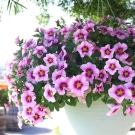

Sowing subtleties
You don't need to use seedlings to grow calibrachoa in your garden.Planting is no less effective, during which seeds are used. It should be planted step by step, according to the instructions. Seed germination occurs over a long period, and not all of them successfully germinate. To get the best option, experts use stimulants such as Zircon and Epin.
Alternatively, you can use a weak solution of the usual potassium permanganate. The seed is kept in the prepared preparation for 24 hours, after which it is transferred to paper napkins or a thin towel until completely dry. The soil mixture for the plant should be moderately nutritious. If it is compiled independently, then compost, peat and ordinary garden soil are taken.
Before sowing the material, the soil will have to be fed with mineral compounds. Further, the seedlings will have to be fertilized regularly during watering until it is time to pick.


Since the substrate should still be loose, it is worth adding coarse sand to it. In this case, the soil will be able to pass air without problems. It is best to adjust the acidity by adding a little lime. Of course, you cannot do without drainage, usually taking from 4 to 5 centimeters. For this purpose, it is customary to use pebbles, on top of which about 1 centimeter of sand is poured. Alternatively, the seeds can be sown into convenient peat tablets.
The seeds are quite densely placed on the ground, usually according to a certain pattern. It means that for an area of 10 by 10 centimeters, from 50 to 70 centimeters is used. This planting is especially relevant if sowing is required in boxes placed on the loggia or suspended from the ceiling.
After completing the planting, you should tighten the boxes with foil and move them closer to the window.
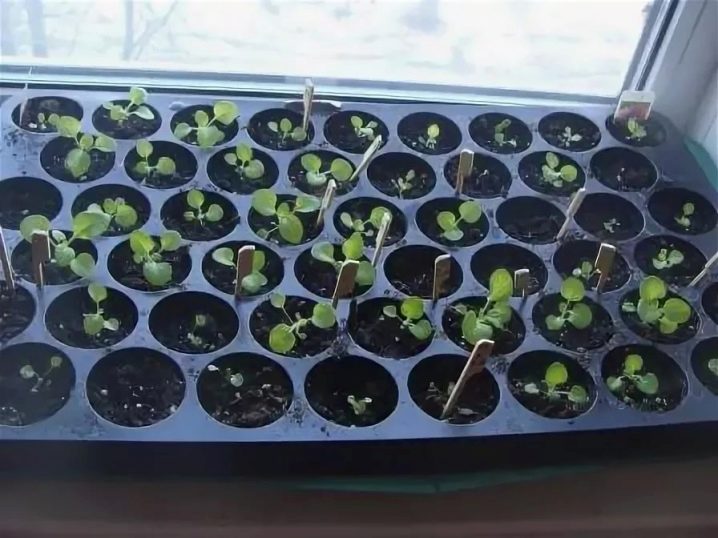
While the seedlings are forming, it is important to irrigate regularly and maintain the required moisture level. Calibrachoa is sprayed three times and poured with heated, settled liquid. In the first month, liquid fertilizers are applied during watering approximately once a week. When about three full-fledged leaves appear on the sprouts, the seedlings can be transferred to the loggia with an open window.
As soon as the daytime temperature reaches a constant level of 22 degrees Celsius, it is time to transplant the calibrachoa to a permanent habitat.... When the plants remain in the boxes, they still need to provide fresh air, for example, by hanging them on the other side of the window. The version with room-balcony growing is more suitable for difficult climatic regions, for example, Siberia.
Regardless of where the bush will develop, the place should be well lit. In addition, regular watering is also important - it is they that allow you to feel good even with direct exposure to ultraviolet radiation.
If the calibrachoa is planted somewhere in the shade, then the flowering itself can greatly slow down, or even disappear altogether. At the very least, the decorative properties of the plant will deteriorate. If the boxes are installed near the wall, preference should be given to the southern one.

How to care?
The success of growing calibrachoa largely depends on whether it is possible to protect the plant from the winds and provide the required temperature regime. Since in the fresh air it is not always possible to maintain all indicators optimal, most gardeners prefer to place calibrachoa in an apartment. Home care will allow, if necessary, to use artificial light lamps, as well as reliably protect from drafts.
In winter, the plant should be kept in a fairly humid and not cold room, with a temperature of 5 to 10 degrees Celsius. In this case, in the spring it will be possible to cut off the clothespins and use them for further reproduction, and the flower itself will be able to bloom again.
Watering
For calibrachoa to develop normally, the soil needs to be irrigated regularly to maintain moisture. However, you should not fill the pot either, because this always leads to rotting of the root system. Regular spraying with settled water that has reached room temperature is considered much more effective. It is better to do this several times a day. The irrigation itself is carried out weekly, and the liquid must be supplied to the root. If the plant lives in the open air, it is important to ensure that rain streams do not fall directly on it.

Fertilizer
After the calibrachoa moves to its permanent habitat, a specific fertilization system should be developed. It is not allowed to immediately use organic matter like manure, as it becomes an excellent soil for the development of fungal diseases.
It is better to take mineral solutions containing phosphorus and potassium, or compost. Top dressing carried out in early spring contains nitrophosphate. This component simplifies the transition of the plant during the growing season. It should be added that one specimen, as a rule, requires from 1.5 to 2 kilograms of land, providing the necessary supply of nutrients. In the absence of top dressing, each season will have to completely change the substrate.
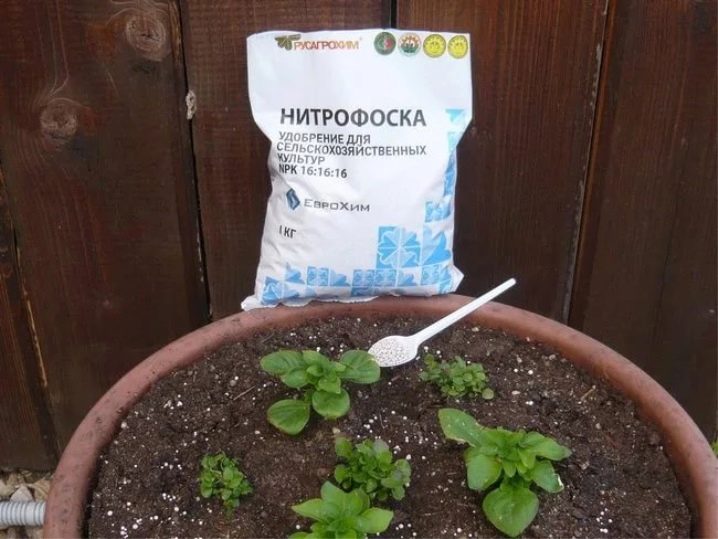
Reproduction
Cutting calibrachoa requires cutting off several tops from the mother plant sometime in August. The cuttings are at least 5 centimeters long. The fragments used should be cleaned of leaves, and then planted in the ground.
For quick rooting, you will have to ensure good soil moisture, as well as a temporary greenhouse effect, using half a plastic bottle. After about two weeks, the greenhouse can be removed, and the plant can be started to look after as a normal adult specimen.
If seeds are involved, the seedlings must first be grown, and then the already formed seedlings should be moved to containers or open ground.
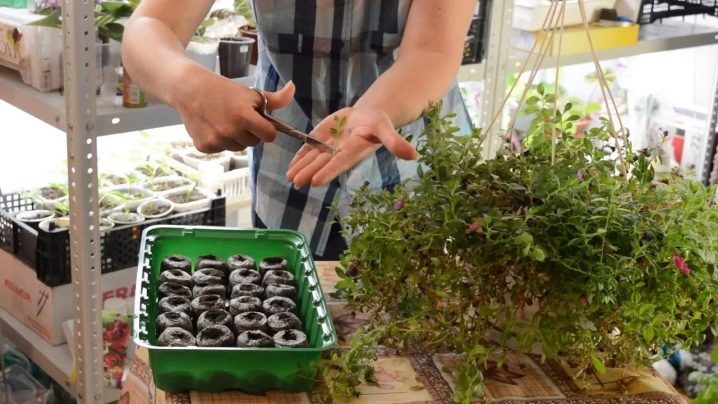
Diseases and pests
Most often, diseases in a flower appear in case of improper care. For example, this is how the black leg fungus arises, the treatment of which is possible only with the use of preparations containing oxadixil and mancozeb. If you do not intervene in time, the plant will turn black, and then it will die.... When seedlings are planted in ordinary garden soil, root rot or chlorosis often develops, which is easily identified by pale and yellowing leaves.
In the case of rot, the plant will have to be transplanted to a dry place, having previously freed from the damaged parts, and chlorosis is neutralized by reducing watering and treating the plant with preparations containing iron chelate.
The most common pests are thrips, spider mites, whiteflies and aphids.
All of them feed on leaves and flowers, which not only impairs the appearance, but also significantly weakens the plant. Calibrachoa can be saved with the help of special insecticides, which are applied every two weeks until the problem disappears completely.

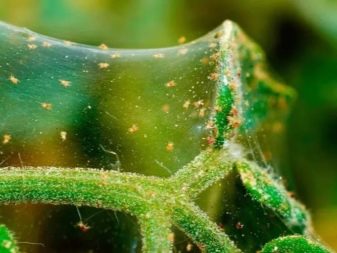


Use in landscape design
Calibrachoa is often used in landscape design or simply used for amateur decoration of verandas, flower beds and balconies. To create a truly beautiful composition, experts recommend combining colors correctly, choosing several contrasting shades. Adding geometry, for example, choosing a clear shape for the flower bed, can improve the decorative appearance of the object. The flower goes well with both curly and flowering representatives of the flora and fits into any landscape compositions.
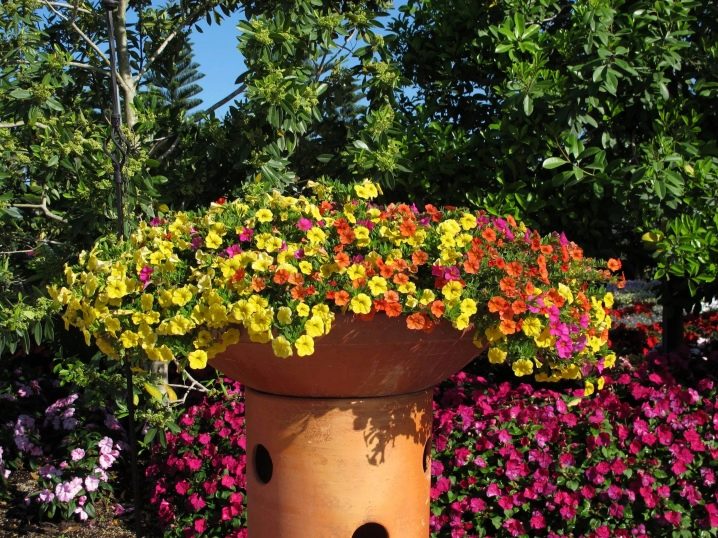
For information on how to properly grow calibrachoa, see below.







































































































This is the best video on calibrachoa!
The comment was sent successfully.